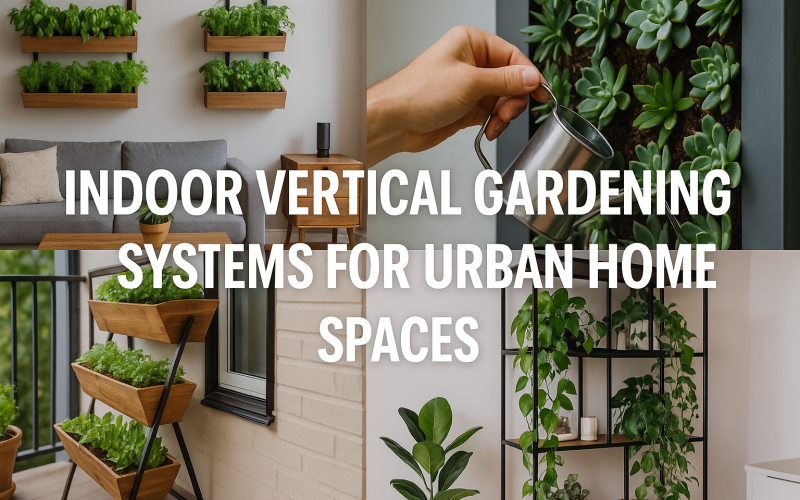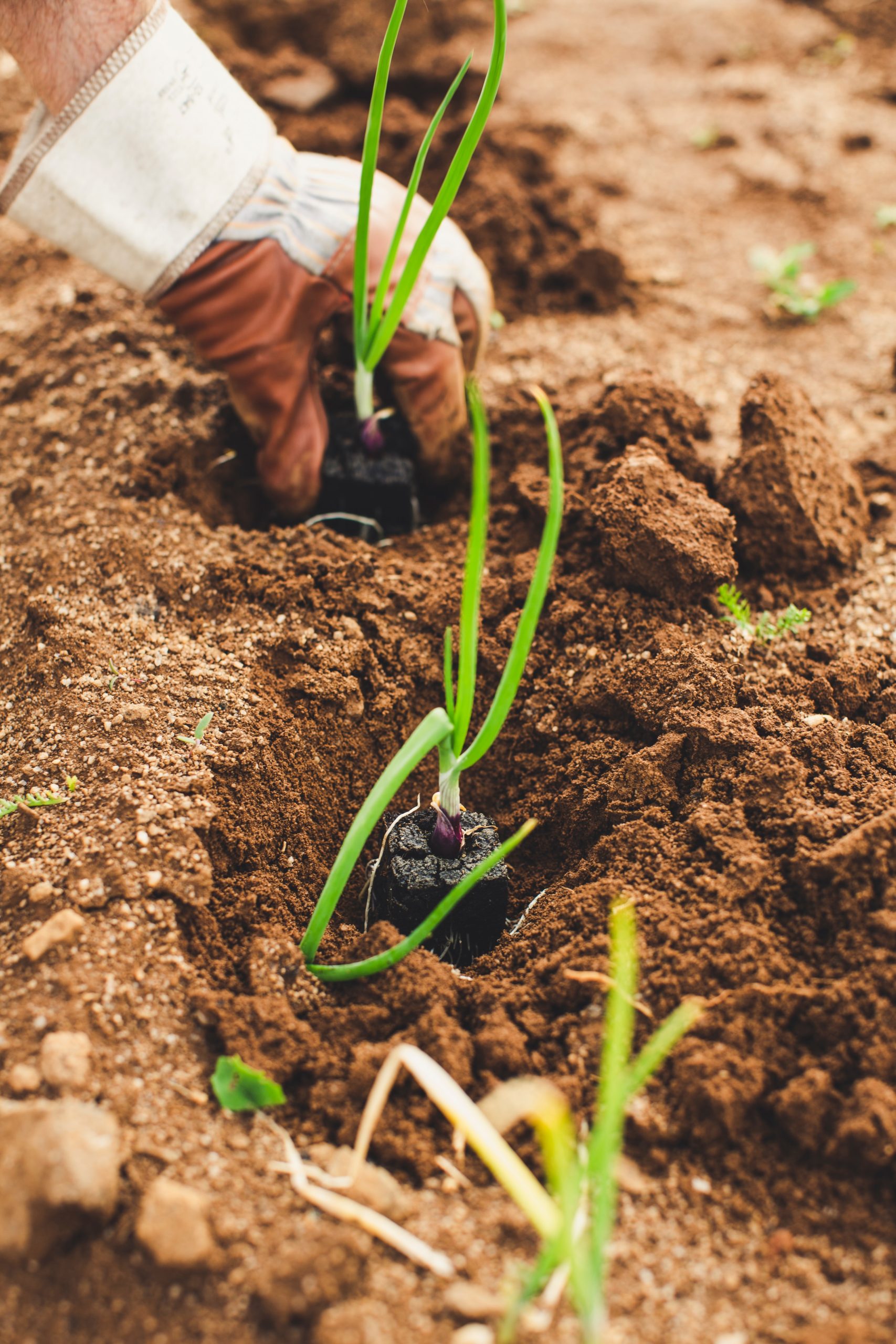Introduction
City living often means trading backyard dreams for towering skylines and tight floor plans. Yet the desire to grow fresh herbs, crisp lettuce, or vibrant flowers never fades. Indoor vertical gardening systems now let apartment dwellers turn plain walls into living produce aisles. By stacking plants upward instead of outward, these systems transform unused corners into lush green towers that clean air, cut grocery bills, and add calming beauty. This guide explains how vertical gardens work, compares popular models, and shows step-by-step how to build and maintain your own indoor farm—using clear language and short sentences so every reader can follow along.
Why Vertical Gardening Fits Urban Life
Maximizing Space
A single floor rack that rises only five feet can host up to thirty heads of lettuce, matching the output of a six-foot outdoor bed. Growing up, not out, leaves room for desks, couches, and that must-have espresso cart.
Sustainability
Homegrown produce skips plastic packaging and long truck trips. Recirculating hydroponic towers use up to 90 percent less water than soil pots, helping the planet while trimming utility bills.
Main Types of Indoor Vertical Systems

Stackable Planter Towers
Plastic or clay sections click together like building blocks. Central tubing sends nutrient solution up; gravity feeds it back down. Good for leafy greens and strawberries.
Hydroponic Shelving Racks
Metal or wood shelves hold trays of rock wool cubes bathed in shallow water. An air pump adds oxygen. Shelves include LED bars above each tier. Suitable for larger crops such as dwarf tomatoes.
Aeroponic Columns
Roots dangle in air while fine mist sprays nutrients. Columns yield rapid growth but cost more and require precise timers.
Table: Quick Comparison of Vertical Garden Systems
| System Type | Footprint | Best Crops | Average Setup Cost (USD) | Monthly Power Use* | Difficulty Level |
|---|---|---|---|---|---|
| Wall Pocket | 2×4 ft wall | Herbs, succulents | 60–120 | <10 kWh | Easy |
| Planter Tower | 1×1 ft floor | Lettuce, berries | 100–250 | 15 kWh | Easy |
| Hydro Rack | 2×3 ft floor | Greens, dwarf peppers | 180–350 | 25 kWh | Medium |
| Aeroponic Column | 1.5×1.5 ft floor | Leafy greens, basil | 250–500 | 30 kWh | Medium-High |
*Power use assumes LED lights running 14 hours per day.
Key Components You Need

Light
Full-spectrum LEDs mimic sunlight while staying cool. Aim for 20–40 watts per square foot of plant area. Clip-on bars adjust height as crops grow.
Water and Nutrients
Hydro and aero units recirculate a mix of water and soluble plant food. Maintain pH between 5.5 and 6.5 for most vegetables. Test weekly with strips.
Airflow
Small clip-fans prevent mold by moving air across leaves. Good airflow also strengthens stems.
Support Structures
Sturdy frames resist tipping. Choose stainless steel or treated wood for racks, food-safe plastics for towers.
Automation
Timers turn lights on and off. Pumps cycle water every 15 minutes in aeroponic setups. Sensors can alert your phone if nutrient tanks run low.
Maintenance Made Simple
- Top up reservoir with plain water to replace evaporation.
- Replace full nutrient mix every two weeks to prevent salt buildup.
- Wipe LEDs and fan grills monthly for dust-free light and airflow.
- Sterilize trays with a mild bleach solution between crop cycles.
Following this routine keeps greens crisp and systems running for years.
Cost and Return on Investment
An entry-level tower might cost 150 dollars fully loaded. Growing two heads of lettuce per week saves around eight dollars at store prices, repaying the investment in under five months. Herbs like basil and mint yield even faster returns because store bundles cost more per ounce.
Troubleshooting Common Issues

Brown Leaf Tips
Cause: High nutrient strength or low humidity.
Fix: Dilute solution by 25 percent and mist leaves lightly.
Leggy Seedlings
Cause: Lights placed too high.
Fix: Lower LEDs to keep tops within a foot of bulbs.
Algae Growth
Cause: Light hitting water surface.
Fix: Cover reservoirs with opaque lids; add a drop of food-grade hydrogen peroxide.
Root Rot
Cause: Warm, stagnant water.
Fix: Add an air stone, chill water to 68 °F, and improve airflow.
The Future of Indoor Vertical Gardening

Smartphone apps already adjust light spectrums based on plant stage. AI cameras spot nutrient gaps before leaves yellow. Compact composters turn kitchen scraps into liquid feed, closing the loop from plate to plant and back. As cities expand and climate pressures grow, indoor vertical farming will likely shift from hobby to household norm, bringing micro-greens and air-cleaning vines to studio apartments worldwide.
Conclusion
Indoor vertical gardening systems let urban residents reclaim food freedom. By stacking crops upward, choosing efficient lighting, and following simple care schedules, anyone can harvest lettuce, herbs, and even small fruits from a single sunny wall or cozy corner year-round. The rewards include fresher meals, cleaner air, and the calm joy of tending living greens. Measure your space today, pick a system that fits, and start growing upward toward a healthier, more sustainable city life.
Call to Action: Ready to build your own sky-high salad bar? Visit a trusted garden supplier, compare tower or shelf kits, and plant your first seeds this weekend—you’ll taste the difference in just a few weeks.










